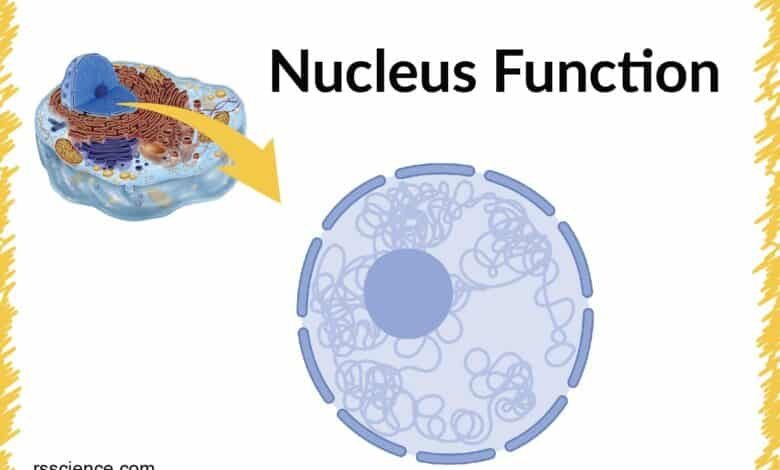Who Discovered the Nucleus in the Cell?: A Step-by-Step Guide

Who Discovered the Nucleus in the Cell?: A Step-by-Step Guide Understanding the cell’s structure is fundamental to biology, and at the heart of this understanding lies the nucleus. This crucial organelle plays a pivotal role in the cell’s functions, housing genetic material and coordinating activities such as growth and reproduction. But who is credited with discovering the nucleus in the cell? Let’s delve into the fascinating history of this scientific breakthrough.
The Beginnings of Cellular Discovery
The story of the nucleus begins in the early 19th century. The cell theory, which laid the groundwork for our understanding of cellular structures, was developed by scientists Matthias Schleiden and Theodor Schwann in the 1830s. They proposed that all living things are composed of cells, and these cells are the basic units of life. However, their work did not yet fully reveal the intricate details within the cell itself.
The Discovery of the Nucleus
The discovery of the nucleus in the cell is attributed to Scottish botanist Robert Brown. In 1831, Brown made a groundbreaking observation while studying the cells of orchids and other plants under a microscope. He noticed a distinct, round structure within the cells that appeared to be consistent across different plant species. This structure was later identified as the nucleus.
Robert Brown’s observations were meticulous and systematic. He used a simple microscope to examine plant tissues and documented his findings in a series of studies. Brown’s discovery was instrumental because it provided a clearer picture of cellular organization. The nucleus was found to be a central component of the cell, distinct from other cell structures. Who Discovered the Nucleus in the Cell?: A Step-by-Step Guide
The Significance of Brown’s Discovery
Robert Brown’s discovery of the nucleus was significant for several reasons. First, it highlighted the complexity of cell structure and hinted at the nucleus’s role in cellular functions. Brown’s observations laid the groundwork for future research into the nucleus’s function, which would come to play a central role in understanding genetics and cell biology.
Before Brown’s work, scientists had a rudimentary understanding of cell structures. The discovery of the nucleus offered a glimpse into the inner workings of cells, sparking further research into its functions and significance.
Understanding who discovered the nucleus is only part of the story. The nucleus’s role in the cell is equally fascinating. It serves as the control center for many cellular activities, including growth, metabolism, and reproduction. The nucleus houses the cell’s DNA, which contains the genetic instructions necessary for the synthesis of proteins and the regulation of cellular functions.
This envelope protects the DNA and regulates the movement of molecules between the nucleus and the cytoplasm. Inside the nucleus, we find the nucleolus, a dense region where ribosomal RNA (rRNA) is synthesized and assembled. This process is crucial for protein synthesis. Who Discovered the Nucleus in the Cell?: A Step-by-Step Guide
The Evolution of Nucleus Research
Robert Brown’s discovery was just the beginning. Over the years, scientists have continued to explore the nucleus’s functions and its role in genetics. In the late 19th and early 20th centuries, researchers such as Walther Flemming and Eduard Strasburger made significant contributions to our understanding of cell division and the role of the nucleus in this process.
Flemming, for example, studied mitosis, the process by which a cell divides to form two daughter cells. work on cell division further elucidated the importance of the nucleus in maintaining genetic continuity.
Modern Advances in Nucleus Research
In the 20th century, advances in microscopy and molecular biology led to a more detailed understanding of the nucleus. The development of electron microscopy allowed scientists to visualize the nucleus with greater clarity, revealing its complex structure and organization.
The discovery of the structure of DNA by James Watson and Francis Crick in 1953 was another milestone. Although Watson and Crick did not discover the nucleus, their work on the double helix structure of DNA provided crucial insights into how genetic information is stored and transmitted within the nucleus.
Today, research continues to explore the nucleus’s role in various cellular processes, including gene expression, DNA repair, and cellular aging. The advent of advanced technologies such as CRISPR and high-resolution imaging techniques has further expanded our understanding of the nucleus.
The Legacy of Robert Brown
Robert Brown’s contribution to cell biology remains a cornerstone of the field. His discovery of the nucleus provided a critical piece of the puzzle in understanding cellular structure and function. Brown’s meticulous observations and documentation laid the foundation for future research and helped shape the course of modern biology.
His discovery of the nucleus paved the way for future discoveries in genetics, molecular biology, and cell physiology.
Conclusion
The discovery of the nucleus in the cell is a testament to the power of scientific inquiry and observation. Robert Brown’s groundbreaking work in 1831 provided a crucial insight into the structure of cells and opened the door to a deeper understanding of cellular functions. His discovery laid the groundwork for future research and continues to influence the field of biology today.
As we reflect on who discovered the nucleus, we recognize the importance of ongoing research and exploration in the quest to understand the complex world of cells. Brown’s legacy reminds us of the importance of curiosity, observation, and perseverance in the pursuit of scientific knowledge.
Understanding the nucleus’s role in the cell is not just a matter of historical interest; it has practical implications for fields ranging from medicine to biotechnology. As we continue to explore the mysteries of the cell, we build on the foundation laid by pioneers like Robert Brown, advancing our knowledge and shaping the future of science.




